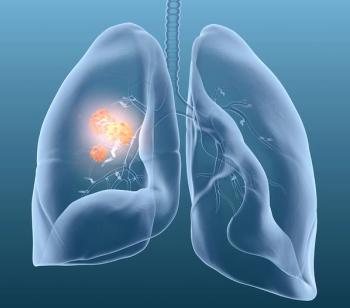
Telehealth Mitigated Negative Impact on Urologic Oncologic Appointments During COVID-19 Pandemic
Research presented at the 21st Annual Meeting of the Society of Urologic Oncology found organized telehealth systems effectively lessened the impact of the coronavirus disease 2019 pandemic on appointment cancellations.
During the coronavirus disease 2019 (COVID-19) pandemic, an organized telehealth program helped to mitigate the negative impact of the pandemic on outpatient urologic-oncologic visits, according to data published in a poster at the 21st Annual Meeting of the Society of Urologic Oncology (SUO).
While the pandemic caused a sharp increase in outpatient visit cancellations, the rapid adoption of telehealth pathways helped to reverse the downswing trend in outpatient and increased cancellations.
“When comparing between 2019 and 2020, our data show decreases in new patient appointment rates for certain urologic cancers (renal and testicular) and comparable rates for others (prostate and bladder),” wrote the researchers. “These differences are likely attributed to varying requirements for visits for different oncologic conditions (physical exam, in-office procedure). The implementation of telehealth helped reverse the initial urologic-oncologic outpatient volume decline at our institution.”
A significant decrease in urologic-oncologic outpatient visits (n=1381) was seen in 2020 during weeks 1-3 of the study (average weekly percentage change [AWPC]: -28.1%; p<0.001), while weeks 1-4 saw a significant increase in oncology telehealth appointments (AWPC: +391.2%; p<.001). More, overall appointments increased significantly from week 6, when the overall appointment trend inflected, to week 13 (AWPC: +7.3%; p<0.001).
In 2019, urologic-oncologic appointments (n=2100) saw no significant changes for overall, new and established patient visits (AWPC: -0.2%, -1.9%, +0.5%; all p>0.2). Meanwhile in 2020, new patient oncologic visits saw a sharp decrease while established patient oncologic visits sharply increased (AWPC: -3.2% vs. +0.8%; p<0.001). Further, cancellations significantly increased in the first 3 weeks of 2020 that were studied (AWPC: +54.9%; p<0.001) but stabilized following that period (AWPC: +5.2; p>0.1).
Broken down by cancer type, patients evaluated via telehealth were 58.2% for prostate cancer, 51.7% for renal cancer, 54.2% for testicular cancer and 42.1% for bladder cancer. When comparing new appointment rates for 2019 and 2020, the percentages were 22.7% vs. 21.4% for prostate cancer, 19.2% vs. 12.3% for renal cancer, 13.7% vs. 13.8% for bladder cancer and 26.5% vs. 14.1% for testicular cancer, respectively.
“Our data show significant contrasting trends for overall new and established patient oncologic visits,” wrote the researchers. “We see differing rates of telehealth usage for different urologic-oncologic conditions.”
The researchers performed a retrospective analysis of the urologic-oncologic visits performed at a tertiary referral center from March 1 to June 1, 2020. Then, they implemented a join-point regression model to examine statistically significant trends of patient visits over time. The team used AWPC to summarize the linear trends identified.
Moving forward, the researchers stress that further research is necessary to “clarify clinical implications and potential deficits” in patient care during the COVID-19 pandemic given the appointment and telehealth utilization trends identified.
“With its rapid implementation, it is important to study whether telehealth adequately supplemented in-person medical appointments,” wrote the researchers. “Additionally, it is important to identify potentially differential impacts on frequently encountered urologic oncologic conditions.”
Reference:
Sanford D, Reddy SS, Park D, et al. Join-Point Regression Modeling of Trends in Urologic Oncologic Outpatient Appointments and Telehealth Usage at a Tertiary Referral Center during the COVID-19 Pandemic. Presented at: 21st Annual Meeting of the Society of Urologic Oncology; December 3, 2020. Poster #67.
Newsletter
Stay up to date on recent advances in the multidisciplinary approach to cancer.
































































































